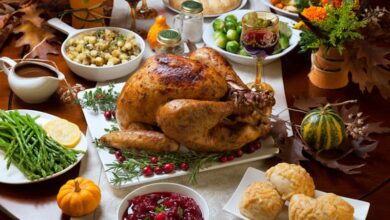Super snacks you can’t go without
Have you ever nibbled your way through the day without eating anything healthy? It’s easy to do because junk food snacks are convenient. Grab a donut in the break room, hit the vending machine between meetings, or buzz through the drive-thru while running errands or carpooling the kids. But that convenience has a hefty price tag. Our bodies don’t function properly when we fuel them with garbage.
Healthy snacking on the run is doable with a little planning. Choose snacks that are nutritious and easy to pack. Foods that fit in a plastic zipper bag can be tossed into your purse or briefcase. Simply carry the snack with you – now that’s convenient!
The perfect snack should be low to moderate in calories and full of nutrients. Your body needs vitamins, minerals, and other nutrients to run the biochemical reactions that maintain health and vitality. A healthy snack also provides a burst of energy mid-morning or during that mid-afternoon slump.
Here are ten of my favorite “on-the-go” snacks:
-
Banana.
This nifty fruit comes in its own package – just peel and enjoy. Bananas are high in potassium, a mineral that helps regulate fluid and electrolyte balance, blood pressure, and heartbeat. Bananas are a great source of vitamin B6 and pectin, a soluble fiber that helps lower LDL, the “bad” cholesterol.
-
Citrus fruit: Orange, tangerine, or grapefruit.
Citrus fruits are easy to carry and keep well without refrigeration for a few hours. Well known for their high vitamin C content, citrus fruits also contain substances called limonoids, which may fight cancer. Eating the whole fruit in sections gives you the added benefit of the fiber and the white pithy stuff, which contains some of the limonoids.
-
Raw veggies: bell pepper strips, celery sticks, baby carrots, cherry tomatoes, broccoli and cauliflower florets.
Veggies are packed with vitamins, minerals, and phytochemicals. Plus, they’re crunchy, low in calories, and full of fiber, which fills you up. Skip the dressing and enjoy the fresh flavor of the vegetables.
-
Apple.
No peeling needed, just take a bite! Apples contain flavonoids, powerful antioxidants thought to lower the risk of heart disease. Studies show that apple eaters have lower risk of asthma and lung cancer. Be sure to eat the peel, which contains most of the antioxidants.
-
Popcorn.
Munching on this movie theater favorite (minus the butter!) is a great way to increase your fiber intake. Three cups of popped popcorn has 3.5 grams of fiber and counts as one serving of whole grains. A recent study showed that popcorn eaters consume over 20% more fiber than non-popcorn eaters.
-
Nuts:
Especially almonds and walnuts.
Although nuts are high in fat, it’s mostly the good-for-you monounsaturated kind that helps lower blood cholesterol. Nuts are chock full of protein, fiber, vitamins, and minerals. Both almonds and walnuts contain vitamin E, magnesium, and a tiny bit of iron. An antioxidant in walnuts called ellagic acid may even fight cancer.
-
Red or purple grapes.
Dark-colored grapes contain a compound called resveratrol that fights cancer and the effects of aging. Grapes also contain antioxidants that help protect against heart disease and the damaging effects of environmental pollutants. To get maximum antioxidants, eat the grape seeds.
-
Whole grain cereal
(such as bite-sized shredded wheat, Cheerios, oat squares)
When choosing a dry cereal, look for whole grain, low sugar, and high fiber. Read the side panel to be sure a whole grain, like oats or 100% whole wheat, is the first ingredient listed. The insoluble fiber found in whole grain cereals promotes regularity and helps prevent colon cancer.
-
Whole grain crackers with peanut butter or almond butter.
Skip the prepackaged ones and make your own. Peanuts are surprisingly high in antioxidants and contain heart-healthy monounsaturated fats. Natural peanut butter is best because it contains no added sugar and no hydrogenated oils. Likewise, look for whole grain crackers that say “0 grams trans fat” on the nutrition label and have no hydrogenated or partially hydrogenated fats in the ingredients list.
-
Dark chocolate.
Candy that’s good for you! A compound in cocoa called flavonols can help lower blood pressure, reduce inflammation, and even help prevent blood clots – all of which lead to a reduced risk of heart disease. Chocolate is high in fat, so limit your serving size to one ounce per day. And look for real dark chocolate which contains more cocoa.
There are lots of other nutritious snacks that aren’t on the list because they’re trickier to pack – like hard-boiled eggs, yogurt, and berries. These foods need refrigeration, so tuck them into an insulated lunch bag with an ice pack.
Next time you go out – bypass the break room, avoid the vending machine, and ditch the drive-thru. For convenience and good nutrition, pack your own snack!
– B E T H R E I N K E







